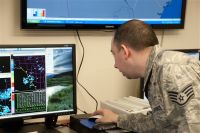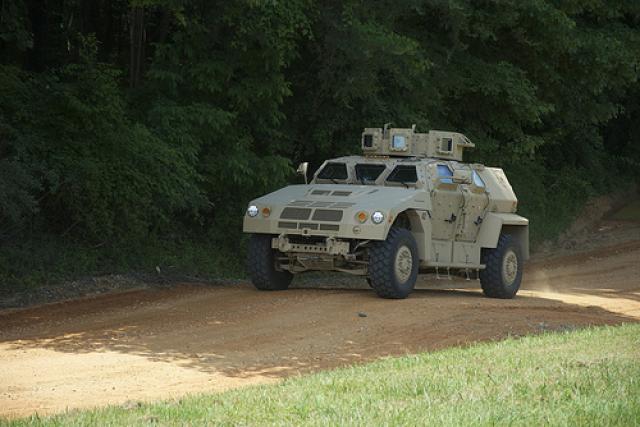LAUGHLIN AIR FORCE BASE, Texas, Sept. 28, 2011 — Air Force Staff Sgt. Thomas Jenkins refused to accept during his deployment in Iraq that the region’s dangerous dust storms could not be better predicted. As his squadron’s weather flight noncommissioned officer in charge, he took it upon himself to change that.
Jenkins, with the 47th Operations Support Squadron here, recently was deployed to Forward Operating Base Kalsu, Iraq, when he decided to give himself a research project before devising a plan to improve dust storm forecasts. In the United States, he said, “we typically work with water-based weather such as rain, snow and thunderstorms. When you’re out in [U.S. Central Command areas], you don’t typically see that much. It’s more blowing dust and sand storms. Because our models aren’t built to work with that, it tends to be … more unreliable than what your typical weather forecast would be.”
That problem gave the military unit only about 10 to 15 percent accuracy in predicting dust storms, he said.
After about five months of research, Jenkins said, he devised a math formula that launched predictability to 80 percent accuracy for predicting dust storms. While the improved accuracy may not be needed much stateside, he said, it will be vital in many areas of Centcom.
“In the field, it will make sure [warfighters] will have air support for whatever immediate mission they are on, and have it more reliably,” Jenkins said.
“Blowing dust and dust storms can provide huge impacts to missions and to ground personnel,” said Air Force Tech. Sgt. Brian Aragon, the weather operations flight’s noncommissioned officer in charge. “Personnel can even be lost in an unforecasted event. So, having better tools to forecast these events can work to our advantage by being able to predict occurrences with the same accuracy as with forecasting rain and thunder, or even fog.”
Every tool available is needed in a hostile location, Aragon said. “Everything we do is so time-sensitive and element-critical that we need every available tool, product and method that we can spare,” he said. “It is something that is proven enough that the National Weather Service and Army research agencies are interested in its applications. This tells me that we need it in the field yesterday.”
In the past year, Aragon helped Jenkins show his findings to people who would allow them to prosper and move toward implementation, including officials at the Air Force Weather Agency at Offutt Air Force Base, Neb.
With the research completed and with the weather agency’s stamp of approval, training and field distribution is to begin next year, Jenkins said.
That accomplishment speaks volumes about Jenkins, Aragon said.
“When an airman comes up with an idea or concept and works to test its usefulness, it speaks highly of their dedication to the mission,” Aragon said. “When you have the mettle to push it further, to ensure that it reaches as many eyes as possible with the goal of making it commonplace for how we conduct standard [operations], that speaks volumes about character.”
Source:
U.S. Department of Defense
Office of the Assistant Secretary of Defense (Public Affairs)

 von
von 
